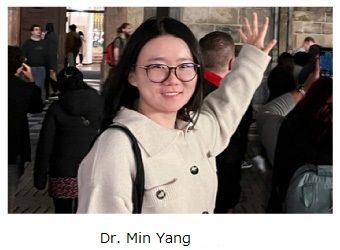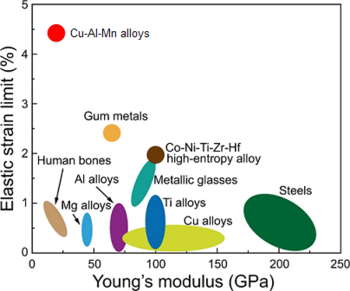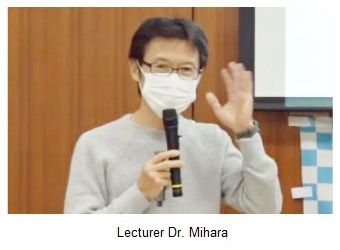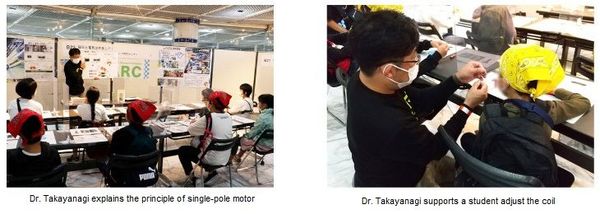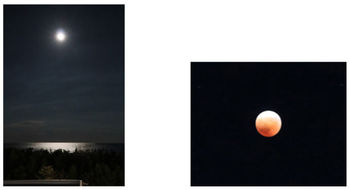J-PARC News December (Issue #211)
■J-PARC Center and ESS ERIC (European Spallation Source ERIC) Celebrate Renewal of Cooperation Agreement in Field of Spallation Neutron Source Development
The renewed cooperation agreement between the J-PARC Center and ESS in spallation neutron source development was signed on June 8, 2022. On October 10, a ceremony was held in Lund, Sweden, where ESS is located, in the presence of the Japanese Ambassador to Sweden, Mr. Noke Masaki, to mark the extension of the agreement. At that time, the signed agreement was handed over between Dr. Kobayashi, Director of the J-PARC Center, and Dr. Schober, Director General of the ESS.
Since 2012, in constructing high-power spallation neutron source facilities and research and development, ESS and J-PARC have maintained a cooperative relationship through exchanging information and technology and dispatching human resources for the operation of the world's most advanced spallation neutron source. Through this collaborative relationship, both organizations aim to utilize each other's potential for further development in this field.
■Dr. Min Yang Receives Isamu Abe Prize at PCaPAC 2022 Workshop
Dr. Min Yang in the KEK Accelerator Laboratory was awarded the Isamu Abe Prize at the PCaPAC 2022 workshop in October 2022, hosted by the ELI Beamlines Facility in Prague, Czech Republic. The prize is given to young engineers and scientists who show innovative ideas or achievements in the field of accelerator controls.
PCaPAC, Emerging Technologies and Scientific Facilities Controls (formerly Personal Computers and Particle Accelerator Controls), is a series of workshops focusing on low-cost control systems and emerging technologies in the field of accelerator control and data acquisition (DAQ). It is also known as the gateway to the accelerator control community for young researchers. The oral presentation of Dr. Min Yang was titled “APPLICATIONS OF TIMING READ-BACK SYSTEM IN J-PARC MAIN RING.” She developed the timing read-back system for J-PARC Main Ring, which supervises the timing signals distributed by the accelerator timing system. She reported that the system operation started, and it was used during the beam operation in June 2022.
For more detail, please visit the KEK website.
https://kekacclserver.kek.jp/accl/eng/topics/20221102.html
■Dr. Katsuhiro Moriya won the Young Scientist Award of the Physical Society of Japan (Beam Physics)
Dr. Katsuhiro Moriya, a member of Accelerator Section 2, Accelerator Division, received the Young Scientist Award of the Physical Society of Japan (Beam Physics Division). This award is given every year to encourage young, competent researchers who are expected to play essential roles in beam physics in the future and to stimulate their research. Dr. Moriya studied beam instability in a tabletop ion trap system using a compact linear Paul trap (LPT) called S-POD, which experimentally simulated transverse motion in an accelerator. This has contributed to a better understanding of low-order mode resonances in beam dynamics. This achievement also has expanded the possibilities of accelerator technology based on beam physics.
For more information, please visit the J-PARC website.
https://j-parc.jp/c/topics/2022/11/07001048.html
■Elucidating the Mystery of Neutral Hydrogen States in Semiconductors
-Expectations for a Detailed Understanding of Hydrogen in Materials through Organic Collaboration of Experiments and Theory (October 6)
Hydrogen is a ubiquitous impurity that can creep into any substance. Even a tiny amount of hydrogen can significantly affect the electrical properties of semiconductors and other materials. In many cases, the trace amounts of hydrogen that enter during the manufacturing process are considered to be isolated at interstitial positions in crystal lattices. The nature of such isolated hydrogen as an impurity is still a mystery. In particular, isolated hydrogen can theoretically be in either a positive or negative ionic state in thermal equilibrium, but experiments have confirmed a neutral state in many materials. This discrepancy between theory and experimental results has attracted attention as a fundamental problem in recent years.
Muons can be regarded as light isotopes of hydrogen in terms of their interaction with materials. Aiming to resolve this discrepancy, the Muon Science Research Group of the Institute of Materials Structure Science has re-examined the research results on muons as hydrogen isotopes accumulated over the past half-century at J-PARC and around the world. The team focused on the previously overlooked fact that the neutral muon state is observed as a pair with the positive ionic state in oxide semiconductors and carefully examined the correspondence between experimental results and theoretical calculations. Consequently, they successfully constructed a model that can systematically explain almost all experimental results by interpreting the neutral and positive ionic states corresponding to the theoretically predicted acceptor and donor state pairs as metastable states. This model is expected to pave a path to a detailed understanding of hydrogen in materials through synergetic collaboration between experiment and theory.
Please visit the J-PARC website for more detail.
https://j-parc.jp/c/press-release/2022/10/06001017.html
■Newly Developed Metal Exhibiting Gigantic Elastic Strain of Over 4.3%
-Expected to be Applied to High-Performance Spring by Realizing Large Elastic Deformation- (October 13)
A research group at the Graduate School of Engineering, Tohoku University, in collaboration with JAEA, J-PARC Center, Czech Academy of Sciences, Czech Technical University, and Kyushu University, has successfully developed a metallic material with a significant elastic strain of 4.3%. This significant achievement defies the common wisdom that the elastic tension of common metal materials is less than 1%. The material is expected to be applied to artificial bones, dental materials, and high-performance springs by taking advantage of the property of significant expansion and contraction under an external force.
For this development, the research group focused on the copper-aluminum-manganese alloy system. Alloys in this system have a crystal structure with an ordered atomic arrangement, which allows for a largely stretching or shrinking in a specific direction. By subsequently carefully controlling the crystal orientation and atomic arrangement, the group successfully developed a bulk single-crystal material. The results of the uniaxial tensile test at room temperature showed that this material exhibited an elastic strain of over 4.3%.
Furthermore, in order to investigate the mechanism of this elastic deformation, structure observation by in-situ neutron diffraction measurement during tensile tests was performed at the Engineering Materials Diffractometer "TAKUMI" (BL19) in the Materials and Life Science Experimental Facility (MLF) at J-PARC. The results show that the strain in this new alloy originates from the expansion and contraction of the crystal lattice while maintaining the ordered atomic arrangement, i.e., without changing the crystal structure or the phase condition. This is different from the "pseudo elastic deformation" due to martensitic phase transformation seen in conventional shape memory alloys. The high performance is maintained during repeated deformation.
For more information, please visit the J-PARC website.
https://j-parc.jp/c/press-release/2022/10/13001019.html
■J-PARC Photo Contest 2022 Held
The J-PARC Photo Contest, held every year in the fall, has been held for the ninth time this year and received 34 entries from J-PARC personnel, users, and others. After careful selection, one Grand Prize winner, two Excellence Award winners, and seven Honorable Mentions were selected.
The Grand Prize went to Mr. Masahiko Uota of the Accelerator Section 5 for his work entitled "Do specular reflection images in a vacuum duct dream of ray-tracing in a quadrupole magnet?". The chairman of the judging committee commented, "This work makes me imagine an entrance to another world, and I feel a strong power that draws me toward the center of the work." The awarded works are used as a calendar and other promotional materials for J-PARC.
■J-PARC Hello Science "Mysteries of the Universe Probed by Muons" (October 28)
October's "Hello Science" was led by Dr. Satoshi Mihara of the division of Particle and Nuclear studies, who introduced experiments using muons and their properties.
Due to the muon’s ability to penetrate matter, seeing through the inside of an active volcano such as Mt. Asama turned possible. The characteristic X-ray wavelengths emitted after muon capture by atoms have recently been used to elucidate the contents of Ogata Koan's "unopened medicine bottle" and to analyze the asteroid Ryugu in a non-destructive manner. Muon, a member of the elementary particle family, is about 200 times heavier than electron. The current Standard Model of elementary particle physics shows that a muon can decay into an electron and two neutrinos. The COMET experiment at the Hadron Experimental Facility, for which Dr. Mihara is in charge, uses the large number of muons produced by the high-intensity proton beam provided at J-PARC to search for a rare muon phenomenon where a muon converts into an electron without emitting neutrinos. If such a phenomenon is found, it is evidence of the existence of an unknown new particle. At the beginning of the universe, all matter was in a high-energy state, broken up into elementary particles free to fly around. New physical laws beyond the Standard Model are thought to be necessary to understand such a state, where particles yet unknown to us should exist adequately. In other words, the result of the COMET experiment provides a clue to solving the mystery of the early universe. Dr. Mihara likened the journey in search of unknown elementary particles to a unique "Otsukai" and said that if muons return with information about the unknown particles, they will be an essential clue to solving this mystery.
■The 7th Symposium on Integration of Humanities and Science Held (November 2 and 3)
The world's most intense negative muon beam generated at MLF in J-PARC is used to analyze cultural properties. To further promote this kind of integration between cultural heritage researchers in the humanities and quantum beam researchers in the natural sciences, KEK Institute of Materials Structure Science holds the "Symposium on Integration of Humanities and Science" every year. The 7th symposium, "Exploring the History with Quantum Beams - The Horizon of Fusion of Humanities and Science Spun by Accelerators," was held at the Kobayashi Hall on KEK's Tsukuba Campus this year. On November 3, a ZOOM webinar-style "General Lecture" was also held to explain recent achievements in an easy-to-understand manner for the general public.
In addition to researchers specializing in quantum beams, the symposium was attended by researchers in archaeology and cultural heritage research from universities and museums interested in nondestructive analysis, as well as members of the general public, totaling about 70 participants and 23 oral presentations. The general lectures included three lectures; "What is nondestructive analysis?", "The Frontiers of Medical Cultural Properties: The World told by Ogata Koan's Medicine Box" and "Components of Asteroid Ryugu Revealed by Muon Nondestructive Analysis" were presented by leading researchers and were attended by approximately 160 members of the public.
■The 22nd Science Festival for Youth in Hitachi, "Are Magnets and Electricity Good Friends? " Conducted by J-PARC (October 23, Hitachi Civic Center)
The Science Festival for Youth in Hitachi is held with the support of local universities, high schools, many companies, and organizations to grow the next generation of science and technology leaders. This was the first time to be held on-site for three years. At the venue, many attractive science experiments and craft workshops were conducted. The J-PARC booth offered a craft workshop on constructing a monopole motor. A monopole motor is the simplest, requiring only one alkaline battery, a small neodymium magnet, aluminum foil, and copper wire. Dr. Tomohiro Takayanagi of the Accelerator Section four explained how the copper wire turns with Fleming's left-hand rule. He also explained in an easy-to-understand manner that the accelerator at J-PARC operates on the same principle. Even after the copper wire successfully rotated, the children continued to enjoy the experiment by reversing the magnet's poles and changing the copper wire's shape.
■SACRIE☆School "Let's investigate elementary particles through experiments with tops!" (November 5, Hitachi Civic Center)
Dr. Masashi Otani of the Accelerator Section seven was a lecturer at the science experiment class organized by the Hitachi Civic Center Science Museum (SACRIE), where he conducted experiments using magnets and a lesson for making tops. The morning session was attended by eight groups of 16 parents and children from the general public. Seventeen children from the Japan Space Youth League of the Hitachi Civic Center Division participated in the afternoon session. First, to understand the properties of magnets and electric current, attendees compared the orientation of the compass placed around magnets with that of the compass when an electric current was applied to a coil. Next, by spinning a gyroscope and observing the precessional motion changing the rotation of the axis by change of the position of the center of gravity of a top made by themselves, the students learned that the top's behavior is similar to the spin property of elementary particles. Although the story about elementary particles may have been a little difficult, the children commented, "It was good to know about precessional motion," "The gyroscope was very fun," and "I could know many new things."
■Sanpomichi #29 -Total Lunar and Planetary Eclipses
On November 8, we could see a total lunar eclipse from the 4th floor of the J-PARC research building. On that day, there was also a planetary eclipse, in which the Moon hid Uranus simultaneously. It was the first time in 442 years that a total lunar eclipse and a planetary eclipse co-occurred when Nobunaga Oda was active.
The principles of solar and lunar eclipses have been known for quite a long time, and the ancient people predicted the exact date as early as BC. However, we do not know if Nobunaga knew the principle of the lunar eclipse and had a moon-viewing. The wisdom on the lunar and planetary eclipses may have been only widely communicated to some humanity due to the lack of publicity media.
At the J-PARC, while exploring the fundamental principles of the universe at the Hadron Experimental Facility and the Neutrino Experimental Facility has been conducted, the rocks from the asteroid Ryugu have also been analyzed. The next total lunar and planetary eclipse will coincide in 322 years. We, the public relations staff, will continue to disseminate the research results of J-PARC so that people can enjoy their Moon viewing with a broader knowledge of the universe.


